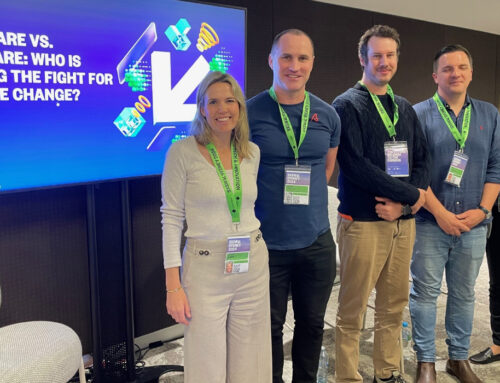The first thing we normally notice about a company is its product – but that’s just what’s on the surface. The true nature of a company involves many components interacting amongst each-other, much like our own body has many systems working in tandem to make up the whole.
Companies each have their own processes, values and pace. Whether it’s “move fast and break things” at Facebook or “being a force for good” at Canva, these core values set the discourse of a company.
Whilst it’s easy to compare growth metrics and product specs, there is a, je ne sais quoi, a feeling, an essence in the culture that’s far harder to measure from the outside. Ultimately – it is this essence, that determines so much of who succeeds, and who fails.
For many years Enron was perceived as indestructible, until it demised under the weight of its own lies. More recently we’ve watched the boom and bust of Theranos as its culture of fear[1] caused the company to ultimately implode. WeWork rose to the top of everyone’s watch-list, outpacing any previously witnessed growth, before breaking into pieces before our eyes.
Over my 10 years as an investor, I began to recognise a clear pattern, something intangible.
As my experience grew, the conclusion became clear … what made the essence of a valuable company was not the product… it was in the people and the agreed acceptable conduct between them … the backbone is truly the culture. But how do we get an insight to this from the outside? What makes a superior culture and how do we spot the fault lines in the failures?
One way to understand this is to imagine a company as a sentient being – a human with many of the same systems working together.
We create the following map:
Skeleton = Culture
Soul = Founders values
Skin = Product
Cardio-vascular = The Speed
Nervous system = Systems / Operations
Brain = Strategy
Cash = Adrenaline

Human Skeleton
Skeleton = Culture
At the core is the skeleton. This is what keeps it all together. For a company, this is its culture. It cannot be faked, and a seemingly small broken bone can, in time, cause a deathly infection.
If a company does not operate under stressful conditions (it lazes on the couch rather than sprinting a marathon), that limb may not be overused, and the fault may go unseen for a long time.
However, overworking a sore bone can cause irreversible damage. A growth at all costs culture at Enron forced further and further lies to be swept under the carpet, bringing an infection to a broken bone as accounting fraud commenced. When tough decisions start needing to be made and a clear and ethical culture code is not present, it is easy to excuse hiding a mistake. Over time, little lies or indiscretions (such as at Theranos) tend to cumulate. Left untreated this can spread as an infection throughout the whole body and ultimately be fatal to a company.
There are of course treatments, but they can be difficult to execute. If the bone is isolated, one may undertake surgery to remove the individuals who perpetrate a toxic culture – clearly this is more difficult when it stems from the top (it’s hard to amputate a skull). Alternatively, antibiotics (cultural transformation) may be used for treatment over a long period of time, however changing culture takes many years and is one of the most difficult forms of transformation[2].
Soul = Founders Values
Anyone who has been a founder or worked intimately with them knows of the hardship, the hours and the emotions they pour into their dream. In fact, as the company grows, you notice that start-ups tend to personify their founders – their personality, values and beliefs become embedded into the company. It is not unreasonable to therefore analogise that a part of a founder’s own raison d’etre is transferred into the company itself.
Of course, over time, the company will surpass this and create its own nervous system and culture so that it may outlive the founder – but at least initially – there is a spiritual link between the founder and their creation, just like there is a spiritual bond between a child and a parent.
This is why VCs are very picky with founders – as, so often, the culture is a reflection of the founder themself.
Skin = Product
This is what is most visible to outsiders. The product is the image of itself that a company gives to the outside world. But just like with the human body, it is skin deep and can be easily manipulated with a fresh splash of make-up (a clean investor deck) or a bit of botox (a pretty interface). Of course, a sloppy user experience will come off as a big blemish to the outside world and may loose some customers, but no-one died from eczema.
Cardio-vascular = The Speed
The speed at which a company grows puts various pressures on its cardio-vascular system.
Slow and steady growth makes it far simpler to maintain a culture and to transition systems. Once you pick up the pace, extra effort is necessary to maintain values and operations. The rule of thumb is every time your headcount triples your old systems break e.g. your notepad of ideas as a solo-founder may need to switch to a Whatsapp chat with your first 2 hires, and transition again to Slack as your team reaches nine. When you move to a team of 27 a weekly all hands-on deck call will become increasingly difficult and you may need to form divisions.
If this happens rapidly, you may experience growing pains. Perhaps new employees won’t be mentored properly and won’t understand the company’s values, or perhaps an HR function will be added too late. If culture is not actively created and supported – it’s very easy to lose.
Nervous system = Systems / Operations
The nervous system determines how the company responds to internal and external stimulus. Some responses are hard coded – like a reflex to touching a hot stove. These processes are embedded and happen automatically within an organisation – think payroll or issuing an invoice.
Other processes are more nuanced, such as a negotiation strategy. Here the culture of the business will embed a moral code and guide the detail. There may be systems in place to detail minimum acceptable terms to negotiate, but there will also be grey areas for interpretation. Is integrity a core value? Or is it growth at all costs? Your culture will define the choices employees make in the grey space. Beyond what is embedded in the systems, it is the culture and the people who determine which compromises are made. If the culture isn’t well defined, it can be difficult to predict the outcome.
Operations are effectively the translation of culture into code[3]. In Theranos, the culture of fear led to lies being perpetrated throughout the organisation and staff being bullied. Employees were systematically targeted for speaking out which embedded this culture[4]. A tell-tail sign of this is employee attrition. This contrasts to Bridgewater, where a deliberate culture of radical transparency has helped them deliver an impressive investment track-record.
Brain = Strategy
The strategy is what guides the body and sets its course. It can cause the body to go into exhaustion, and run at a pace that’s blitzscaling; or it can meditate and move slowly and safely. Depending on the surroundings of the company, different approaches will be more appropriate. If you’re being chased by a lion (an inbound competitor), a slow style may not win the race. However, if they’re working in a highly regulated space like pharmaceuticals (less predators nearby), patience may pay off.
Cash = Adrenaline
Sometimes even a horribly broken bone can be used as with enough adrenaline humans can ignore systemic issues and continue at a super-human pace. Adrenaline is designed to be a naturally produced hormone in small quantities, but when it floods the system in abundance, it can mask fault lines and cause further injury by not addressing the issues. Great examples of over-using broken bones due to cash abundance are Theranos, WeWork and Enron.
For a company to reach its full potential, each of these systems must cooperate and work together. What we can see clearly though, is that some functions are more critical than others. It is far easier to mend a broken product, than to reconstruct a spine.
Given the ripple effects bad culture can have on a company, it is essential for founders to consciously and actively create and maintain their culture.
It is therefore critical that investors deep-dive into both the founders and the cultural values of an organisation. Where this gets difficult is seeing what values are upheld as an external observer. So how can we spot a fracture?
As the systems/ operations aim to hardcode the culture, they are the first and most measurable signal available. Next we can examine the environment in which a company is operating. If it’s received the benefit of numerous adrenaline injections, it may have enough to hide an injury. Whilst cash is obviously beneficial to companies with both good and bad cultures, well-funded blitzscaling start-ups do require extra due diligence on their culture in order to ensure growing pains are well-managed.
As culture is lived by the employees and how they interact with one-another, ultimately the best tell is what you learn from observing exactly the je ne sais quoi between them.
As a founder, it is critical to create and measure culture. Create a cultural code that’s aligned to your values and business purpose.
[1] Source: https://www.eaglehillconsulting.com/insights/theranos-toxic-culture-lessons/
[2] Source: https://www.torbenrick.eu/blog/culture/why-is-organizational-culture-change-difficult/#:~:text=Changing%20an%20organization’s%20culture%20is,communications%20practices%2C%20attitudes%20and%20assumptions. https://www.bcg.com/en-au/publications/1968/change-management-behavior-culture-why-change-is-so-difficult
[3] Further insights can be found here: https://blog.sageintacct.com/blog/7-ways-a-winning-strategy-culture-and-operations-deliver-results
[4] Source”: https://www.eaglehillconsulting.com/insights/theranos-toxic-culture-lessons/






